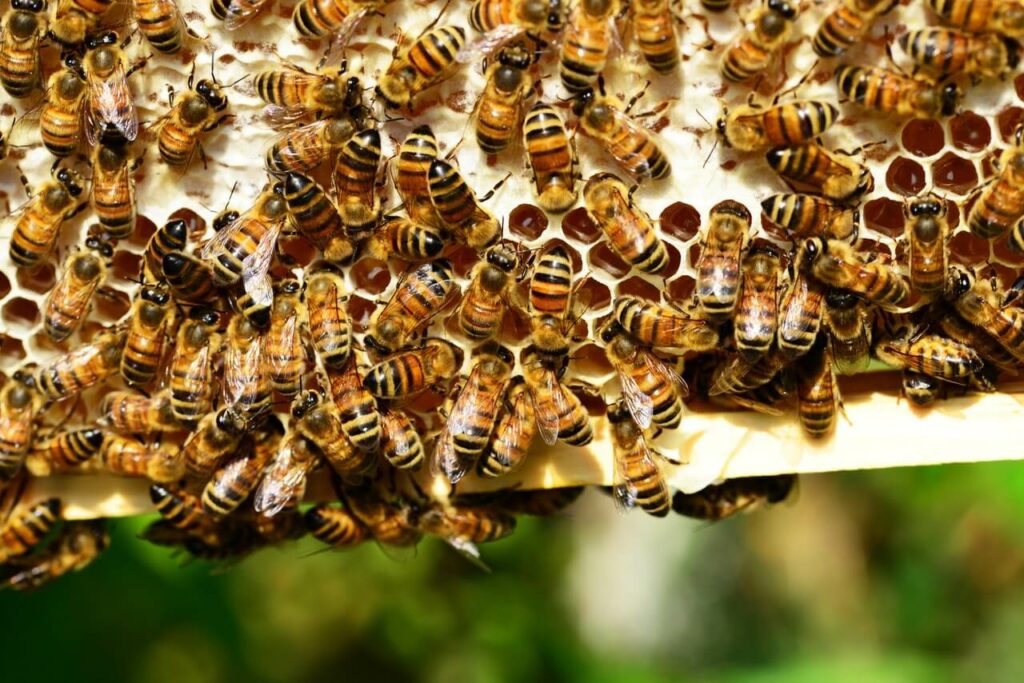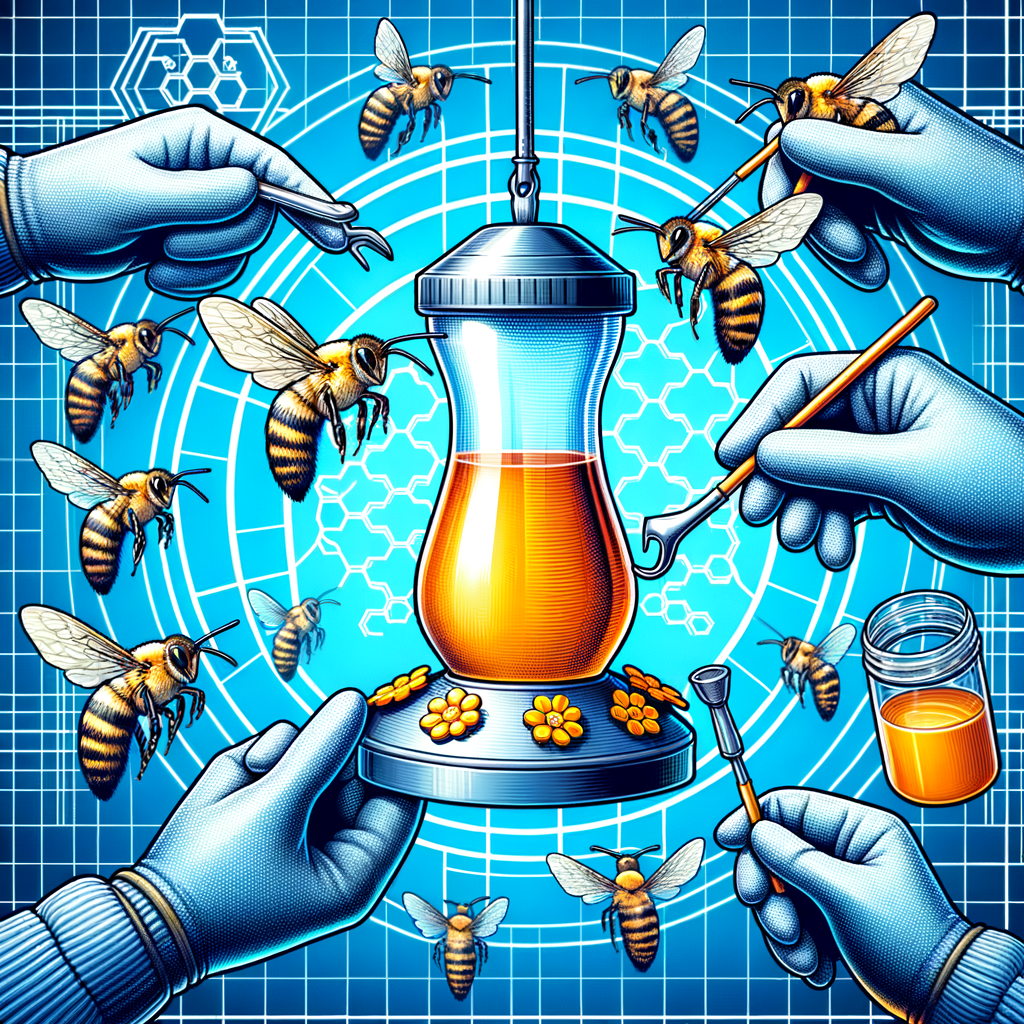Introduction to Hummingbird Feeders
Welcome to the fascinating world of hummingbird feeders! These special devices are more than just decorative items for your garden. They play a crucial role in the survival and well-being of hummingbirds, one of nature’s most beautiful and intriguing creatures.
Importance of hummingbird feeders
Hummingbird feeders are essential for these tiny birds, especially during migration periods when natural nectar sources may be scarce. They provide a reliable source of energy-rich food that helps hummingbirds maintain their high metabolism. According to Wikipedia, a hummingbird’s heart beats up to 1,260 times per minute, and they need to consume about half their body weight in sugar daily to sustain this high energy level. By installing a hummingbird feeder in your garden, you are helping these amazing creatures thrive.
Types of hummingbird feeders
There are numerous types of hummingbird feeders available, each with its unique features. The most common types include:
Bottle feeders: These feeders have a reservoir that holds the nectar and a feeding port where the birds can access the nectar.
Dish feeders: These are shallow dishes filled with nectar. They often have a cover to protect the nectar from rain and insects.
Window feeders: These feeders attach directly to your window, allowing you to observe hummingbirds up close.
Regardless of the type, it’s important to choose a feeder that is easy to clean and refill, as cleanliness is crucial to prevent the spread of disease among hummingbirds.
In the following sections, we will delve deeper into the challenges hummingbirds face, such as the bee problem in feeders, and how bee guards can help solve this issue. Stay tuned!
Understanding the Bee Problem in Hummingbird Feeders
Hummingbird feeders are a wonderful way to attract these beautiful birds to your garden. However, they can also attract unwanted guests – bees. Let’s delve into why this happens and the problems it can cause.
Why bees are attracted to hummingbird feeders
Bees, like hummingbirds, are drawn to the sweet nectar in hummingbird feeders. This sugary solution mimics the natural nectar found in flowers, which is a primary food source for both bees and hummingbirds. In fact, bees have an exceptional sense of smell and can detect the scent of sugar from miles away. Therefore, once a feeder is discovered by a bee, it’s likely that more will follow. Bees are not intentionally trying to cause a problem; they are simply trying to survive.
Problems caused by bees in hummingbird feeders
While bees are important for the environment, their presence in hummingbird feeders can cause several issues. Firstly, they can deter hummingbirds from using the feeder. Hummingbirds are generally peaceful creatures and will often avoid a feeder swarming with bees. Secondly, bees can drown in the nectar, contaminating it and making it unsafe for hummingbirds. Lastly, a large congregation of bees can also pose a risk to humans, especially those who are allergic to bee stings.
In the next section, we will explore solutions to this problem, specifically the use of bee guards for feeders. These devices can help keep bees away from your hummingbird feeders, ensuring a safe and peaceful feeding experience for the birds.
Introduction to Bee Guards for Feeders

Hummingbird feeders are a wonderful way to attract these beautiful birds to your garden. However, they can also attract unwanted visitors like bees. That’s where bee guards come into play. In this section, we will introduce you to bee guards, explain what they are, and how they work.
What are bee guards?
Bee guards are small devices that are designed to keep bees away from hummingbird feeders. They are typically made from plastic and come in various shapes and sizes. The main purpose of a bee guard is to allow hummingbirds to feed while preventing bees from accessing the nectar. This is important because bees can deter hummingbirds from visiting your feeder and they can also deplete the nectar supply quickly.
How bee guards work?
Bee guards work by taking advantage of the differences between hummingbirds and bees. Hummingbirds have long, slender beaks and tongues that can reach into the small feeding ports of a bee guard to access the nectar. Bees, on the other hand, cannot reach the nectar through these small ports. Additionally, most bee guards are red, a color that bees can’t see well but hummingbirds are attracted to. This further discourages bees from trying to feed from the hummingbird feeder.
In conclusion, bee guards are an effective and simple solution to keep bees away from your hummingbird feeders. They are easy to install and can greatly enhance the feeding experience for your hummingbirds. In the next sections, we will discuss the benefits of using bee guards and how to choose and install the right ones for your feeders.
Benefits of Using Bee Guards in Hummingbird Feeders
Hummingbird feeders are a wonderful way to attract these delightful creatures to your garden. However, they can also attract unwanted visitors like bees. This is where bee guards come into play. Bee guards are simple devices that can be attached to your hummingbird feeders to keep bees at bay. They offer numerous benefits, two of which we will discuss in detail below.
Protecting Hummingbird Feeders from Bees
Bees are attracted to the sweet nectar in hummingbird feeders. Once they find a source of food, they tend to return in large numbers, making it difficult for hummingbirds to feed. Bee guards are designed to prevent bees from accessing the nectar while still allowing hummingbirds to feed. The guards have small holes that are big enough for the hummingbirds’ long, thin beaks but too small for the bees to get through. This ensures that your feeder remains a safe and peaceful feeding spot for hummingbirds. [source]
Increasing the Lifespan of Hummingbird Feeders
Bees can cause significant damage to hummingbird feeders. They can chew through plastic feeders and cause leaks, leading to wastage of nectar and a messy garden. By keeping bees away, bee guards can help increase the lifespan of your hummingbird feeders. This not only saves you money in the long run but also reduces the amount of waste generated, making it a more environmentally friendly option. [source]
In conclusion, bee guards offer a simple and effective solution to the common problem of bees at hummingbird feeders. They help protect the feeders and increase their lifespan, making them a worthwhile investment for any hummingbird enthusiast.
Choosing the Right Bee Guards for Your Hummingbird Feeders

Choosing the right bee guards for your hummingbird feeders is a crucial step in ensuring a safe and enjoyable feeding experience for your feathered friends. There are several factors to consider when purchasing bee guards, and numerous brands available in the market. Let’s explore these aspects in detail.
Factors to Consider When Buying Bee Guards
When purchasing bee guards for your hummingbird feeders, it’s important to consider the following factors:
Size: The size of the bee guard should be small enough to prevent bees from accessing the nectar, but large enough to allow hummingbirds to feed.
Material: Bee guards should be made of durable materials that can withstand outdoor conditions. Plastic is a common choice, but ensure it’s BPA-free for the safety of the birds.
Color: Bees are attracted to bright colors, especially yellow. Opt for bee guards in red or other colors that are less attractive to bees but still appealing to hummingbirds.
Easy to Clean: Choose bee guards that are easy to disassemble and clean. This helps maintain a healthy feeding environment for the hummingbirds.
Top Bee Guard Brands for Hummingbird Feeders
There are several reputable brands that manufacture high-quality bee guards for hummingbird feeders. Here are a few top picks:
Perky-Pet: Known for their wide range of bird feeding products, Perky-Pet offers durable and easy-to-clean bee guards.
Woodlink: Woodlink bee guards are praised for their sturdy construction and effectiveness in keeping bees away.
Aspects: Aspects offers a variety of bee guards in different sizes and colors, catering to different types of hummingbird feeders.
Remember, the right bee guard can make a significant difference in attracting hummingbirds to your feeder while keeping unwanted bees away. Consider the factors mentioned above and choose a brand that aligns with your needs and budget.
How to Install Bee Guards on Hummingbird Feeders
Step-by-step guide on installing bee guards
Installing bee guards on your hummingbird feeders is a simple process. Here are the steps:
First, purchase the right size of bee guards for your feeder. They should fit snugly over the feeding ports.
Next, remove the feeder from its hanging position and clean it thoroughly.
Once clean, place the bee guards over the feeding ports.
Finally, rehang your feeder and observe to ensure the bee guards are effective.
Tips for successful installation
For a successful installation, ensure the bee guards are securely fitted and not loose. Loose bee guards can easily fall off or allow bees to access the nectar. Also, consider installing the bee guards when the feeder is empty to avoid spilling nectar.
Regular cleaning of bee guards and feeders
Regular cleaning of your bee guards and feeders is essential. This not only keeps the feeder attractive to hummingbirds but also prevents the build-up of harmful bacteria. Clean your bee guards and feeders at least once a week using warm soapy water.
Replacing worn-out bee guards
Over time, bee guards can wear out and become less effective. It’s important to regularly inspect your bee guards and replace them if they show signs of wear and tear. A good rule of thumb is to replace your bee guards every season.
Using bee-resistant hummingbird feeders
Another effective way to keep bees away from your hummingbird feeders is to use bee-resistant feeders. These feeders are designed with bee guards built into the feeding ports, making them a convenient option.
Other methods of bee prevention in hummingbird feeders
Besides using bee guards, there are other methods to keep bees away from your hummingbird feeders. These include using feeders with red ports (bees are less attracted to red), hanging your feeders in the shade (bees prefer sunny areas), and avoiding feeders with yellow accents (bees are attracted to yellow).
Summary of the benefits of using bee guards
Bee guards offer numerous benefits. They prevent bees from accessing the nectar, thus reducing competition for hummingbirds. They also help to keep the nectar fresh for longer and reduce the risk of hummingbirds getting stung by bees.
Final thoughts on bee guards for hummingbird feeders
In conclusion, bee guards are an effective and simple solution to keep bees away from your hummingbird feeders. They are easy to install, affordable, and offer numerous benefits. By using bee guards, you can create a safe and peaceful feeding environment for your hummingbirds.







